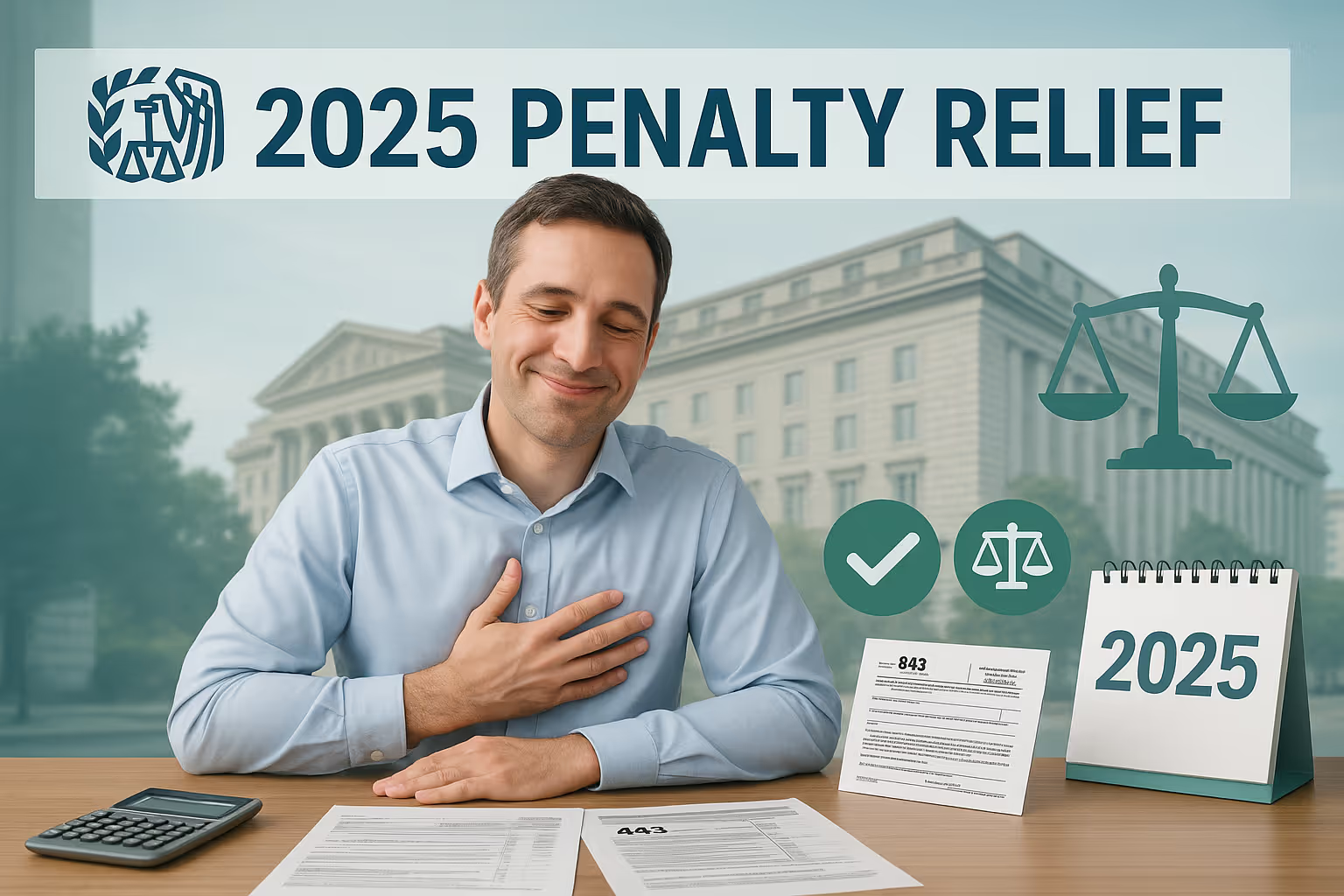
The Internal Revenue Service has confirmed that its penalty relief programs remain in place for 2025, allowing taxpayers to reduce or eliminate IRS penalties tied to late filing, failure to pay, and other compliance issues. While no new initiatives have been introduced this tax year, the existing framework—including first-time abatement, reasonable cause penalty relief, and administrative waiver programs—continues to provide critical support for taxpayers managing their tax obligations.
One of the most widely used programs is the first-time abatement option. It has been designed for taxpayers with a favorable tax compliance history over the past three years. Under this program, penalties for late filing, failure to pay, or failure to deposit may be waived. Importantly, taxpayers with unpaid tax balances can still qualify, but related interest will continue to accrue until the full payment is made.
For taxpayers who don’t meet the criteria for first-time abatement, the IRS offers reasonable cause penalty relief. This program is evaluated case-by-case and requires evidence that the taxpayer acted in good faith and exercised ordinary care. Common qualifying circumstances include serious illness, a natural disaster, lost or missing tax forms, or receiving incorrect written advice from the IRS. Because the agency reviews all the facts and circumstances, outcomes vary, but relief prevents undue hardship from events beyond a taxpayer’s control.
Occasionally, the IRS issues an administrative waiver when major events interfere with compliance. These are usually announced through an IRS news release and may cover specific penalties, such as information return penalties. Past examples include extended filing deadlines after hurricanes, pandemic disruptions, or legislative changes that delayed reporting. The waivers ensure taxpayers are not unfairly penalized when circumstances make compliance impossible.
Taxpayers can request penalty relief in several ways. The most direct way is by calling the toll-free number listed on their IRS notice or letter, which says penalties were assessed. The IRS can often approve a first-time abatement during that call if the record shows a good compliance history.
For more complex cases, taxpayers can submit Form 843, Claim for Refund and Request for Abatement, which provides space to explain the tax situation and attach supporting documents. If more than one relief program applies, the IRS will automatically grant the most favorable outcome.
Relief programs are built into tax law to ensure fairness while maintaining enforcement. While penalties encourage compliance with filing requirements and tax law steps, Congress and the IRS recognized that not every mistake reflects negligence. Programs like first-time abatement and reasonable cause relief help taxpayers who generally maintain good compliance but face unexpected challenges.
When emergencies disrupted compliance in previous tax years, the IRS sometimes issued waivers. Legislative changes that altered filing deadline schedules, extensions during the pandemic, and relief after hurricanes are key examples. These actions often applied to assessed penalties on returns or information return penalties, making sure taxpayers were not penalized for circumstances outside their control.
IRS guidance stresses that relief is not a loophole but a way to encourage taxpayers to stay current. Individuals must still file on time, pay the correct tax, and submit required tax returns. Official resources often carry a “page last reviewed or updated” notice to reassure taxpayers that the information reflects current rules.
According to IRS guidance, “You may qualify for penalty relief if you tried to comply with tax laws but were unable due to circumstances beyond your control.” The agency notes that requests are handled individually, weighing all the facts to decide whether relief applies.
Officials highlight that reasonable cause relief is available when a taxpayer shows they acted with ordinary care and in good faith but still missed a due date. Circumstances such as a serious illness, destroyed records, or reliance on incorrect written advice may be accepted as an acceptable reason.
Tax professionals say many taxpayers don’t realize they can request reasonable relief. A tax advisor explained that relief often applies if a client can show a good tax compliance history and provide evidence of timely electronic filing or other consistent efforts. Advisors recommend responding quickly to any IRS notice or letter to protect appeal rights.
Advocacy groups stress that penalty relief offers taxpayers a way back into compliance rather than leaving them overwhelmed by IRS charges. While other penalties, such as information return penalties, may still apply, relief programs remain vital for fairness within the federal tax system.
Taxpayers facing IRS penalties in 2025 should examine their tax situation to see if they are eligible for penalty relief under first-time abatement, reasonable cause relief, or an administrative waiver. They should keep every IRS notice or letter and respond by the due date listed. Those with unpaid tax balances or continuing penalties should arrange payment options to avoid further charges, even while pursuing relief.
Working with a tax advisor can help ensure that the correct tax forms are filed and that any request for penalty relief is appropriately documented. Relief may reduce assessed penalties and related interest relief, but maintaining satisfactory tax compliance—through timely filing and meeting ongoing tax obligations—is essential to avoid future issues.
These resources are marked with a “page last reviewed or updated” note, ensuring taxpayers have the most current guidance.
By William Mc Lee, Editor-in-Chief & Tax Expert—Get Tax Relief Now